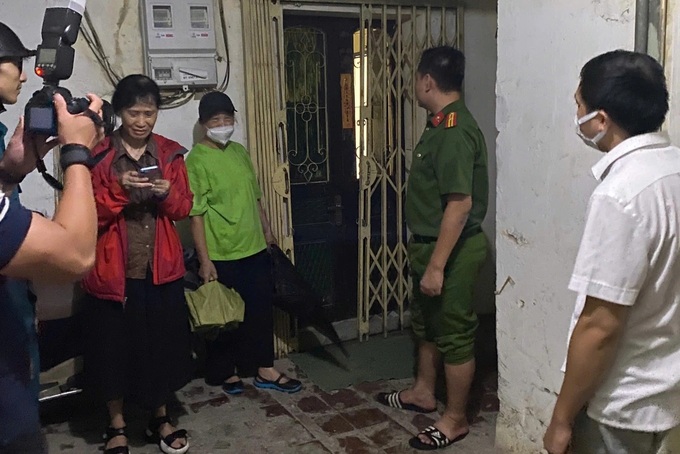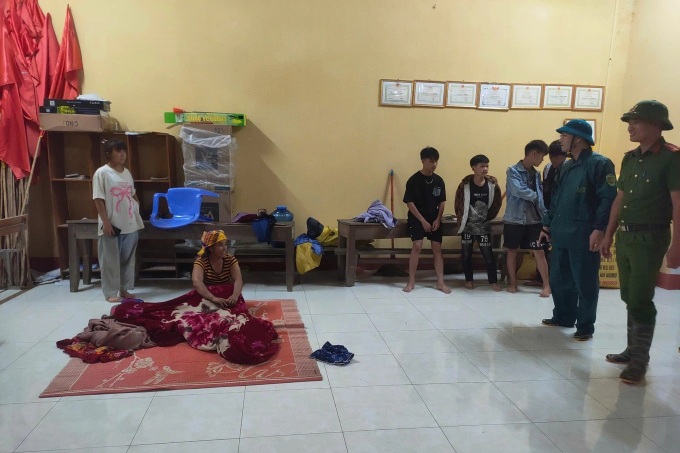
Eighteen residents living in a deteriorating residential block in Hanoi's Giang Vo Ward are evacuated late on July 21
In Hanoi, 18 residents living in eight apartments of the deteriorating G6A Thanh Cong residential block in Giang Vo Ward were evacuated late on July 21. Authorities said residents will be supported with essential needs and security personnel will guard the site to ensure safety and order.
This is the second time authorities have relocated residents from the G6A block due to storm threats. In September 2024, the same area was evacuated ahead of Typhoon Yagi. A 2016 safety inspection classified two of the building’s sections as critically dangerous, requiring demolition. However, dozens of households have continued living there despite safety warnings.
The Northern Weather Forecasting Centre reported that from early July 22 through the morning of July 24, Hanoi would face moderate to heavy rainfall, with some areas seeing over 250mm. Thunderstorms may bring strong gusts, lightning and whirlwinds.
On the evening of July 21, Hanoi Chairman Tran Sy Thanh issued an urgent directive asking local leaders to review and evacuate residents from structurally weak buildings, landslide-prone zones, and flood-prone lowlands. Authorities were also ordered to manage traffic, restrict public movement during the storm, and provide safety guidance during pre-storm conditions.
Mass evacuations in Lao Cai to prevent landslide casualties

Residents are evacuated in Lao Cai Province
In mountainous Lao Cai Province, authorities in Chau Que Commune relocated 98 of 154 households by 11 pm on July 21. These families live in areas at high risk of landslides. In neighboring Phong Du Thuong Commune, two households were evacuated overnight due to the threat of flash floods.
Haiphong residents rush to shelters as storm nears

Food and drinks are prepared at a temporary shelter in Haiphong City on July 21.
On July 21, authorities in Do Son Ward, Haiphong, conducted door-to-door inspections and persuaded residents in vulnerable areas, such as landslide-prone slopes and older housing, to evacuate.
By late afternoon, residents in high-risk areas had been moved to safer locations. The former Hai Son Ward administrative office was converted into a temporary shelter, accommodating nearly 10 people by evening. Officials arranged sleeping spaces and assigned staff to be on standby around the clock.
According to Do Son authorities, over 230 households with more than 700 residents were ordered to evacuate.
Ngo Quyen Ward has 66 designated shelters, currently housing around 2,000 evacuees, mainly residents from 16 deteriorating apartment buildings deemed unsafe during storms. As of 7 pm on July 21, over 1,000 households had been relocated to safety.
Haiphong City has more than 6,600 households, totaling over 19,700 people, living in areas at high risk of landslides. Authorities continue to monitor and prepare for storm-related emergencies. In the Cat Hai special economic zone, nearly 280 tourists, including 84 foreigners, were still staying as of July 21.
